I’ve never understood why anglers (as a group) scored so poorly in the math department. Sure, we got a double helping of optimism, but that was so’s we’d stand out in the rain all day…
Jesus and the Apostles were fishermen, but they had the same problems with figures and addition… It might be why JC was so upset with the money lenders, one of them had the audacity to ask, ” if a barque loaded with Menhaden left Antioch on the morrow, and at the same time a skiff full of Olive oil left Delphi, how much would I …”
Recent events suggests the Roman approach of skewering would have been a better tactic, but like most anglers – Jesu Christo practiced “catch and release.”
I’m not complaining about the raw estimation practiced by our profession, both rounding up and significant digits are all schools of Mathematics with many weighty tomes to back their usage.
The average age of fly fishermen is 51, that’s the number used by Madison Avenue and explains why old scotch, young broads, and things that make a large arse comfortable are featured prominently in our advertising. It’s why angling periodicals feature foreign destinations, and rods are so expensive, because you’re supposed to be older and wiser and have a couple pesos to rub together.
All that by the wayside, what is it about statistics and averaging that gives you fellows so much trouble?
The condensed version, “average” is the important concept to grasp. Simply put, for each one of these:

There’s one of these:
 What we can agree on is that both specimens are in extremely short supply.
What we can agree on is that both specimens are in extremely short supply.
Ignore the candy thrown at you by the “Yellow Journalists” at TroutUnderground, he fishes cane – synonymous for a slow learner.
“Slab of the Week”, “Arse of the Week” or “Breastmeat of the Month” is all smoke and vapor, and the “eye candy” that teases you into thinking monstrous hatches are followed by Lust in the Dust, are pure myth…
… propagated by middle aged fat guys that passed English (barely) and failed math too.
Average age 51, suggests there’s plenty of ladies interested in the sport – they may not have the long legs or bustline to suit your particular kink, but plenty own great tackle, can cast like hell, and own boats.
If Grandma had 60 acres of river frontage, I’d consider raising my standards to match.

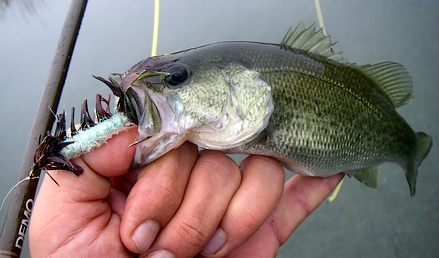
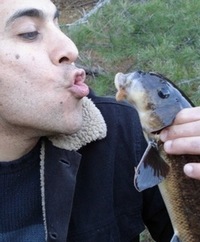 It’s the way of all things.
It’s the way of all things.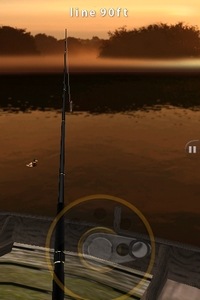 I love gadgets as much as the next fellow, and after eyeballing an Apple iPhone some months ago – I figured sooner or later I might end up owning one.
I love gadgets as much as the next fellow, and after eyeballing an Apple iPhone some months ago – I figured sooner or later I might end up owning one.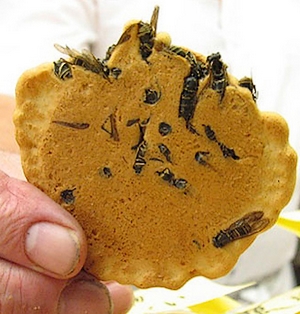 Native foods contain precious anti-bodies to combat the accidental dunking, and coupled with our lay entomological studies – we seek education and immunization in every calorie ingested.
Native foods contain precious anti-bodies to combat the accidental dunking, and coupled with our lay entomological studies – we seek education and immunization in every calorie ingested.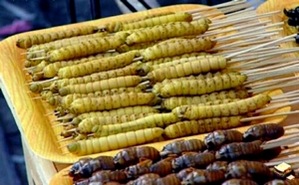 It’s fairly common to mistake our fly box for the party tray as they look so much alike. Neatly ordered rows of “Czech Nymphs” await the angler bent on protein, but “Czech” for fish hooks before swallowing…
It’s fairly common to mistake our fly box for the party tray as they look so much alike. Neatly ordered rows of “Czech Nymphs” await the angler bent on protein, but “Czech” for fish hooks before swallowing…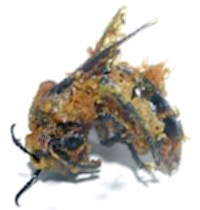 “…. what was that delicious, crunchy, invigorating item in the salad?”
“…. what was that delicious, crunchy, invigorating item in the salad?” Charlie Brown and I had the same vocabulary, featuring a plaintive howl everytime Lucy yanked the football away. My battle was with the fly tyer’s of
Charlie Brown and I had the same vocabulary, featuring a plaintive howl everytime Lucy yanked the football away. My battle was with the fly tyer’s of 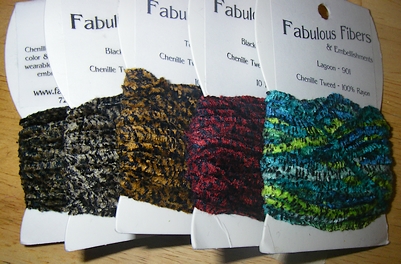
 He certainly shows an enterprising bent, but I think he needs to get out more often. Trapped in an urban setting, there’s always some fishing venue that’ll draw less attention to yourself.
He certainly shows an enterprising bent, but I think he needs to get out more often. Trapped in an urban setting, there’s always some fishing venue that’ll draw less attention to yourself.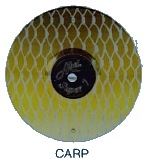 Now Abel reels has ruined it for us odiferous stalwarts – making a “Carp” finish on their latest line of reels.
Now Abel reels has ruined it for us odiferous stalwarts – making a “Carp” finish on their latest line of reels.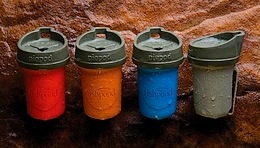
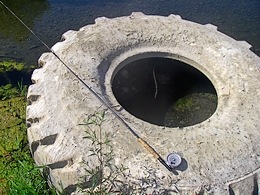 Think bigger guys, note the small sample to assist you in scoping the effort…
Think bigger guys, note the small sample to assist you in scoping the effort…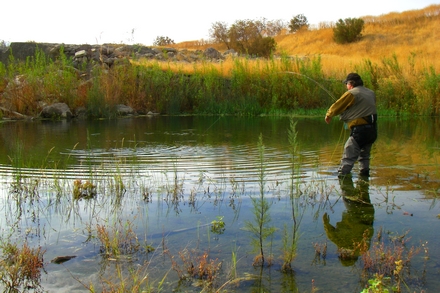
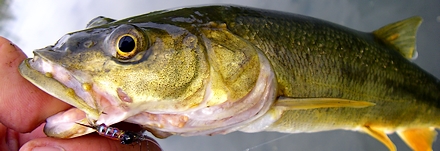
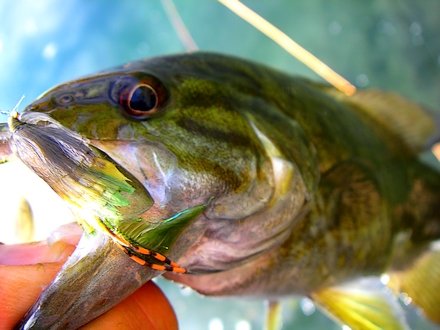
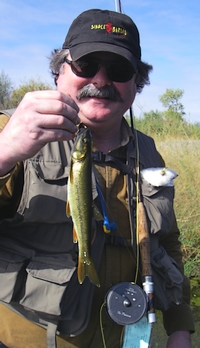 I swapped out the smaller fly for the Little Stinking Olive – I’d had time to produce some variants that had double the lead of the earlier flavor, and added 4 strands of soft crimp Aurora Blaze Angelina to the tail. It’s the dredging version, fast sinking and with a bit of flash to assist in deeper, darker water.
I swapped out the smaller fly for the Little Stinking Olive – I’d had time to produce some variants that had double the lead of the earlier flavor, and added 4 strands of soft crimp Aurora Blaze Angelina to the tail. It’s the dredging version, fast sinking and with a bit of flash to assist in deeper, darker water.